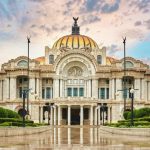Love, Learn, Live Vienna
You can love Vienna,you can learn in Vienna,you can live well in Vienna.There’s only one thing you can’t do: explain Vienna.It’s never easy to get to know a city to the full extent, and in this case could be even worst.
That’s because this mittle-european gem tempts you to discover all its history, and to experience all its new trends.
The metropolis on the “beautiful blue Danube” offers you intense experiences,from the traditional opera ball, to the oncoming Vienna Fair, the trade fair for international contemporary art.
The “old Vienna” comes to life again in Hofburg,home of the Habsburgs over the course of centuries. Was originally a castle built in the XIII century, which was extended to a splendid residence in accordance with the increasing power of the royal family and the expansion of their realm.
Until 1918 was the Imperial palace,and the control center of an enormous empire; today it houses the offices of the austrian president.
The main attractions are the Secular and Ecclesiastical Treasure, including the Holy Roman Empire’s crown, the Sisi Museum,the Imperial apartments and the Spanish riding school,the only institution in the world which has practiced for over 430 years and continues to cultivate classical equitation in the Renaissance tradition.
Another classic destination is the Stephansdom, “St stephen’s cathedral”. Originally built between 1359 and 1433,it was reconstructed after serious war damage. Is an impressive Gothic edifice of dark stone with a colorful roof and a north tower 450 feet (135m) high,named Alter Steffl, “Old Steve”. You can climb the 343 spiral steps of the toer to enjoy a stunning view of the city.
Once you enter the cathedral there are interesting things to see, the first one has to be the pulpit, richly decorated,and then you can move to the unusual tomb of Emperor Frederick III, which represents orrible creatures trying to wake up the emperor.
There’s Shonbrunn Palace,the summer residence of the imperial family, that is considered one of the most beautiful baroque palaces in Europe,and its park. Though it has more than 1,400 rooms, the following stand out:
the Great Gallery, a rococ’ setting for court balls. The Millions Room paneled in rosewood,and the round Chinese Cabinet, where Empress Maria Theresa held state conferences.The Palm House,an art noveau structure that houses a big botanical collection.
Let’s move to the “new Vienna”.
The city is not all waltzer and Schnitzels.Over the last few years has become a trendy destination.
KunstHausWien, the house of Hundertwasser, inaugurated in 1991, consists of two floors, in which a permanent exposition dedicated to the works of the architect is lodged,and additional floors with temporary expositions.
Irregular elements of glass,metal,bricks,wood and ceramic tiles in many colors give a unique character to this odd building.
Not far from KunstHaus, you will find the so-called “Hundertwasser-Haus”, Vienna’s most original public housing complex.
He acquired the former factory of wood furnitures Thonet, adapting it to his characteristic style. The building,previously without anything striking, picks now for its irregular elements and for its differently coloured ceramics tiles.
And what about the MuseumsQuartier?
Is both a trendy youth hangout and a temple of culture. Cafes,restaurants,and the unusual chairs, “enzis”, in the courtyards,make this the perfect place to spend time relaxing.
The contemporary Leopold Museum houses the unique Schiele collection,and progressive spirits will appreciate the media art products offered at Quartier21 (electric Avenue).
The MuseumsQuartier is one of the ten largest cultural complexes in the world, and also includes the Kunsthalle, the Museum of Modern Art, the Arkitekturzentrum and the Tanzquartier.
The Gertel ring road is fast becoming the pulsing heart of Vienna’s nightlife. It is a busy road dividing the central districts from the outer suburbs, and the subway runs along the viaducts of the old Stadtbahn transit system.
Electronic DJs and guitar bands knew certainly not what Art Nouveau architect Otto Wagner had in mind when he designed Vienna’s railsystem, but, despite that, the arcs under the elevated parts of the Stadtbahn have been transformed into focal points of Vienna’s music scene and nightlife.
Want to enjoy art in the evening? Almost all large Viennese museums give visitors the opportunity to see its collection after regular hours at least one evening per week.
Surely you will have a good time in this city, that is fastly becoming the source of a lot of new trends,one of the first destinations of european young people.


